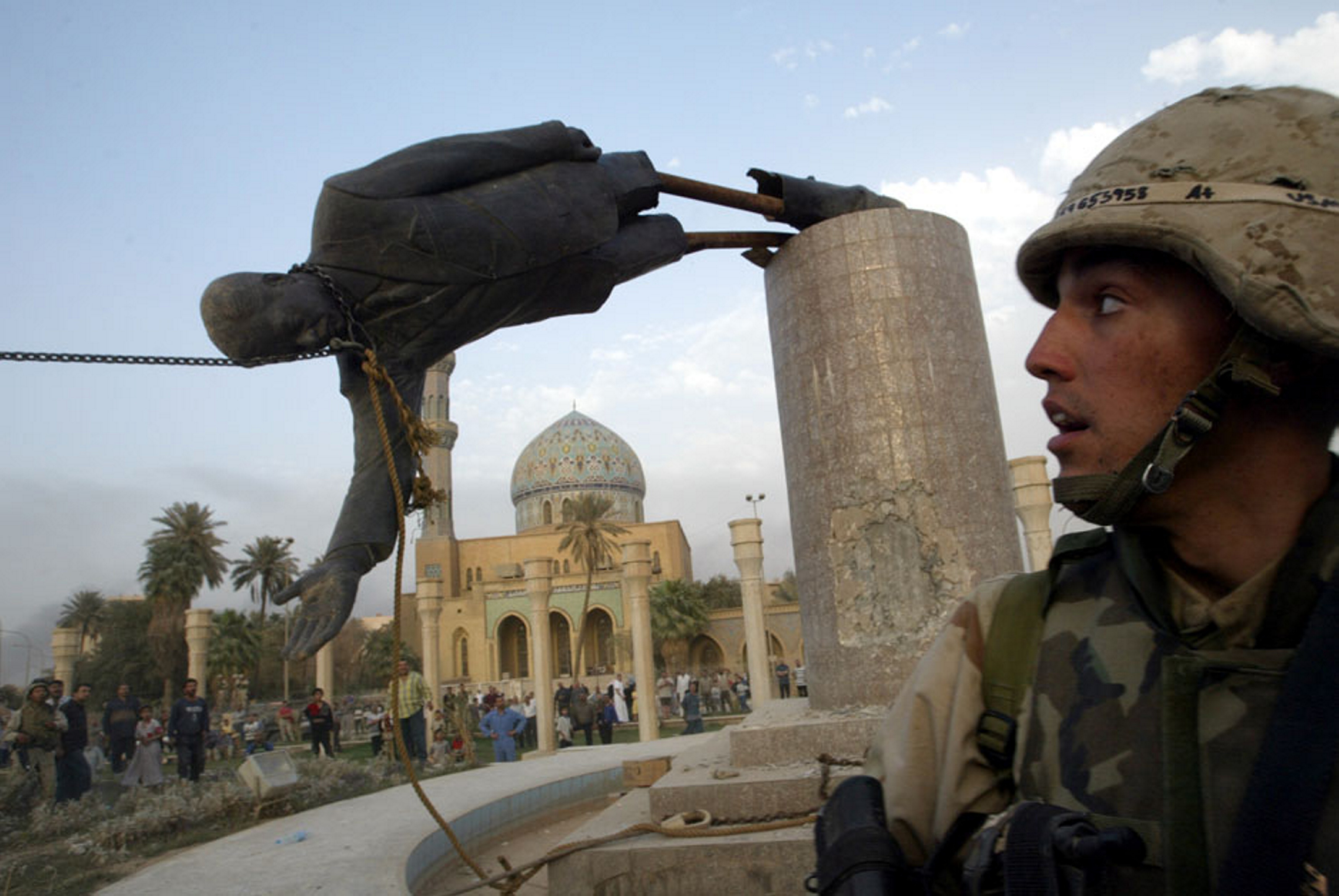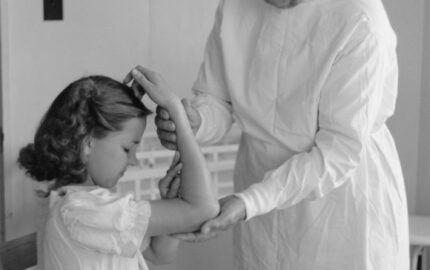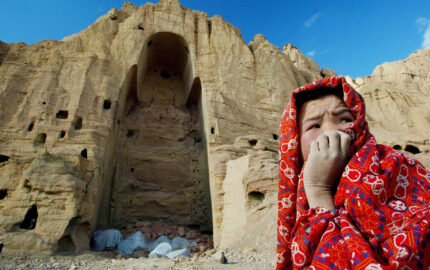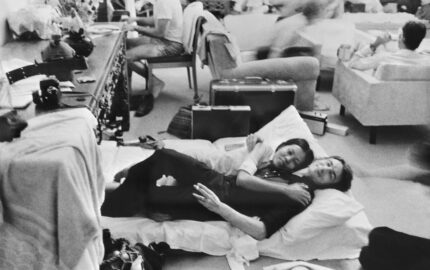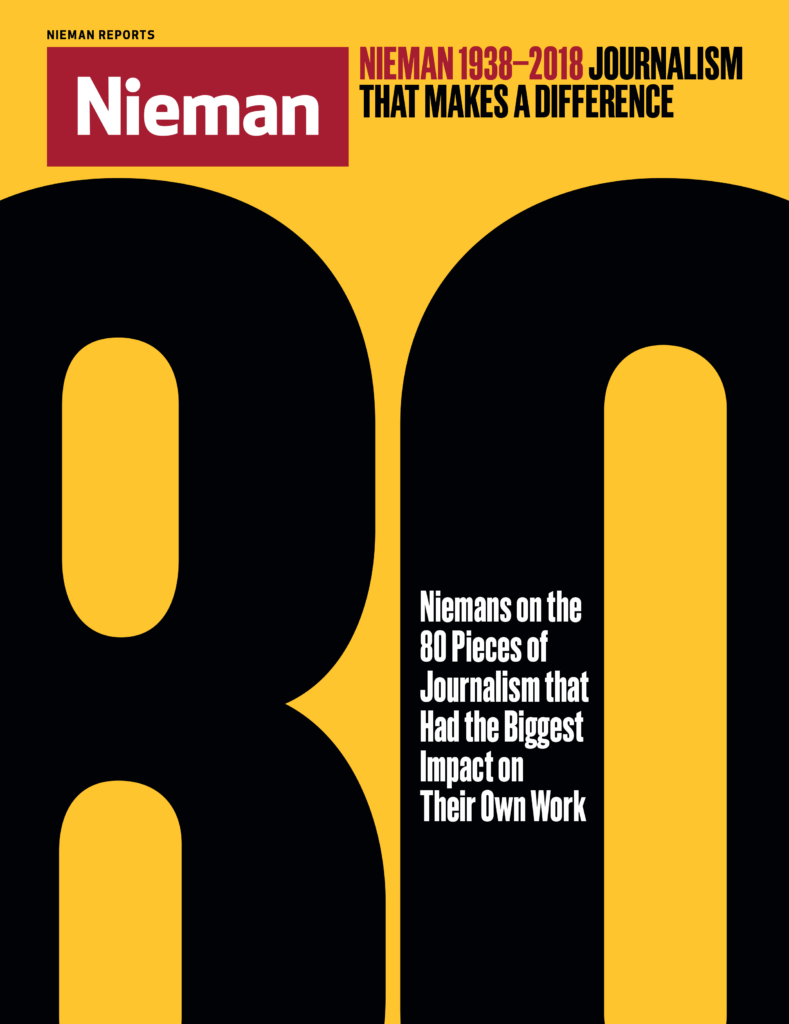
How are great journalists made? Often, it’s pieces of great journalism that help form them, influencing their lives or careers in an indelible way. To celebrate the Nieman Foundation for Journalism’s 80th anniversary in 2018, we asked Nieman Fellows to share works of journalism that in some way left a significant mark on them, their work or their beat, their country, or their culture. The result is what Nieman curator Ann Marie Lipinski calls “an accidental curriculum that has shaped generations of journalists.”
Robert Krulwich is best known today as the co-host of NPR’s “Radiolab.” But before launching the pioneering podcast and radio show with his friend Jad Abumrad, Krulwich was a longtime correspondent for ABC and CBS News. And he was every bit as innovative in television as he has been on the radio.
On April 9, 2003, in the midst of the Iraq War, a statue of Saddam Hussein in Baghdad’s Firdos Square was brought down. Live coverage of the event was broadcast around the world, mostly portraying it as the symbolic end to a war that would continue for more than eight years. It’s an event that has been well-scrutinized, most notably by Peter Maass in The New Yorker in 2011.
I was working at ABC’s “World News Tonight with Peter Jennings” at the time. Sometime that afternoon, Jennings asked Krulwich to file a story for the show about the significance of that image. With only a few hours until air, Krulwich, his producer, Justine Schiro, and editor, Charlie Marcus, set about watching every angle they could find of the moments leading up to the statue’s coming down, making careful note of small details and chronology, and doing what they could to report it from afar.
While many news stories latched on to the narrative that jubilant crowds of Iraqis brought the statue down in celebration of their liberation, Krulwich’s story told the truth: amidst a small group of excited locals, an American military vehicle pulled it down.
The three-minute story (“The Story Behind Saddam Hussein’s Fallen Statue”), written and edited in just two hours, was prescient, precise, and compelling. To me, it’s one of the best examples of why visuals are so important in video storytelling, and a great example of innovative, smart, short-form TV news.
The Story Behind Saddam Hussein’s Fallen Statue
By Robert Krulwich, Justine Schiro, and Charlie Marcus
ABC News, “World News Tonight with Peter Jennings,” April 9, 2003
Excerpt
Robert Krulwich: It all began here in downtown Baghdad. A small crowd is gathered near a thirty-foot-high Saddam Hussein. And two men who just happen to have a twelve-foot ladder with them, the first one hoisted himself up onto the pedestal, followed by another guy in blue—who just makes it—and then a third man just happens to have—look to the right there—what looks like a long, two-inch-thick rope. Next, with the aid of their ladder, the guys throw the rope up over Saddam’s right shoulder, then over Saddam’s left shoulder, and then they cinch it together into a kind of loose noose, while all around the circle, from a distance, Marines are calmly watching as an extremely large man arrives with a sledgehammer and begins pounding the pedestal. Then there’s a tug-of-war over who gets to pound next. Had the statue fallen at this moment, it would have looked like the Iraqis liberating themselves, but then a US tank retrieval vehicle shows up—these are designed to pull heavy equipment out of sand or mud—so up goes the crane. A U.S. Marine scrambles up—he’s followed, you notice here, by an Iraqi—the Marine turns and motions, “No, no, go down,” and waves him away. Seconds later, that soldier is handed an American flag which, in a light wind, stays on Saddam’s face. Had the statue fallen at this moment, the world would have seen an image of American conquest. But after a minute and 32 seconds, you can see the soldier look down—“Stop,” he seems to be told, “Take it down.” “Down?” And he removes it. And he instead gives Saddam an Iraqi flag as a scarf for a couple of minutes. But when it is finally time for the statute to come down, there are no flags.
Printed with permission of ABC News.
